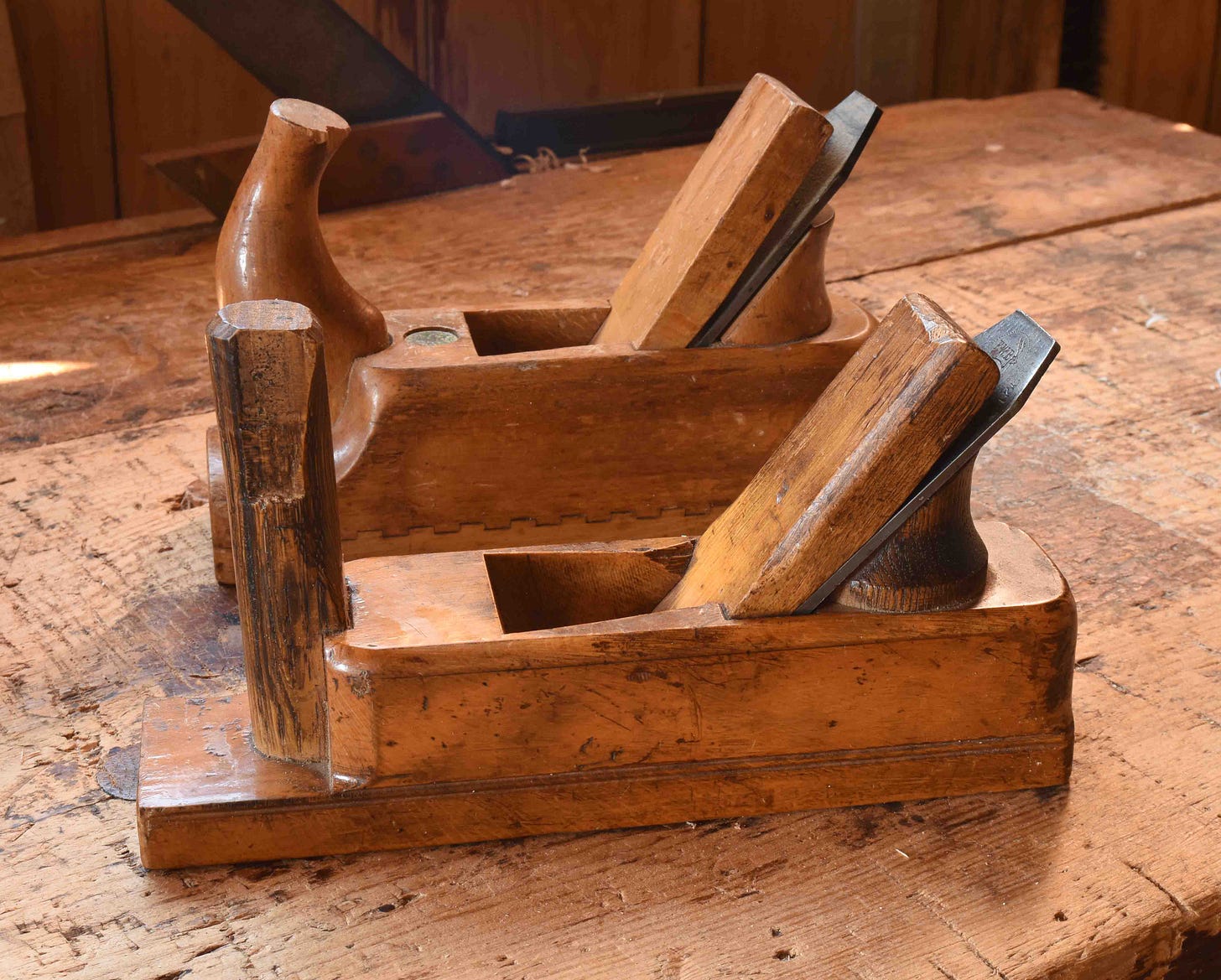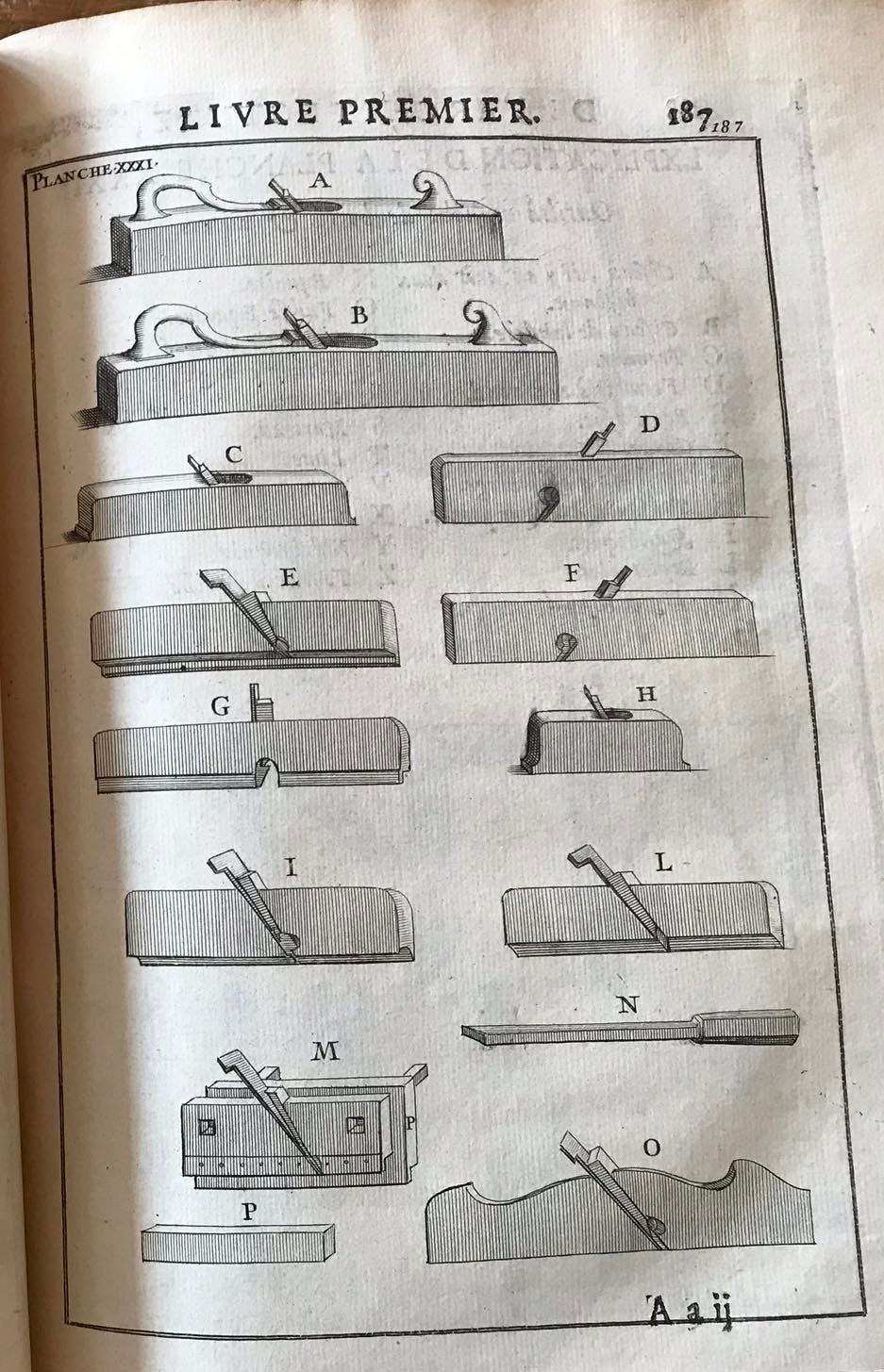I had done a bunch of chairmaking recently and my planes sat neglected. I needed to do some carving the other day, which meant planing some boards first. Which meant sharpening some planes before-first. And that brings me to the scrub plane. Or is it the fore plane? That’s more than a matter of semantics and it’s possible to start a pretty vicious argument if you find the right combination of fanatics on the subject. What I’m talking about is a plane with its iron ground to a curved cutting edge - so the corners don’t dig into the wood and you can therefore take a thick shaving for the initial dressing of your stock.
Let’s start with Joseph Moxon, from Mechanick Exercises or the Doctrine of Handy-works (first published between 1677-1684):
It is called the Fore Plain because it is used before you come to work either with the Smooth Plane, or with the Joynter. The edge of its Iron is not ground upon the straight, as the Smooth Plane, and the Joynter are, but rises with a Convex-Arch in the middle of it; for its Office being to prepare the Stuff for either the Smoothing Plane, or the Joynter, Workmen set the edge of it Ranker than the edge either of the Smoothing Plane or the Joynter; and should the Iron of the Plane be ground to a straight edge, and it be set never so little Ranker on one end of the edge than the other, the Ranker end would (bearing as then upon a point) in working, dig Gutters on Surface of the Stuff; but this Iron (being ground to a Convex- Arch) though it should be set a little Ranker on one end of its edge than on the other, would not make Gutters on the Surface of the Stuff, but (at the most) little hollow dawks on the Stuff, and that more or less, according as the Plane is ground more or less Arching. Nor is it the Office of this Plane to smooth the Stuff, but only (as I said) to prepare it, that is, to take off the irregular Risings, whether on the sides, or in the middle, and therefore it is set somewhat Ranker, that it may take the irregularities the sooner off the Stuff, that the Smoothing Plane, or the Joynter, may afterwards the easier work it Try. The manner of Trying shall be taught, when I come to Treat of the use of the Rule.
Moxon’s plate illustrating joiner’s planes confuses me. For one thing, they sure don’t look like any English tools anyone has ever seen. His fore plane is just shorter than, or about the same length as the jointer. We all know a jointer plane is long. Is the fore plane that long? It is pretty well-known, or well-assumed, that Moxon’s engravings are copied from André Félebien’s Des Principes de L’Architecture (first published in 1676.) Many years ago my friend Paula Marcoux provided me with a rough translation of Félebien’s text -
Le Ristart which serves to pare away the grossest work & for which the iron is hollowed.
This is something like what Paula was working from:
But I wasn’t sure we had the French name of that tool correct. So I asked Chris Schwarz - he set me straight, here’s what he sent:
The word is “Riflard.” The definition from “Dictionnaire Pratique” (Editions VIAL) by Justin Storck goes something like this (my translation of his definition):
A type of plane that is a "wasting” tool used to roughly remove wood. It is similar to the regular planes and is given the name “demi-varlope” (a half plane)…. The edge of its iron is rounded in order to take more wood when working with this plane.
Keep reading with a 7-day free trial
Subscribe to Follansbee's Substack to keep reading this post and get 7 days of free access to the full post archives.







